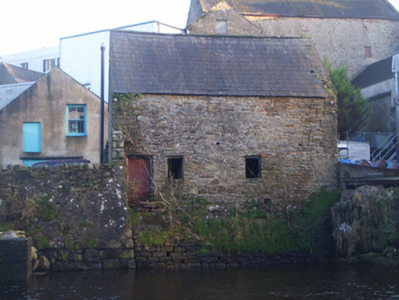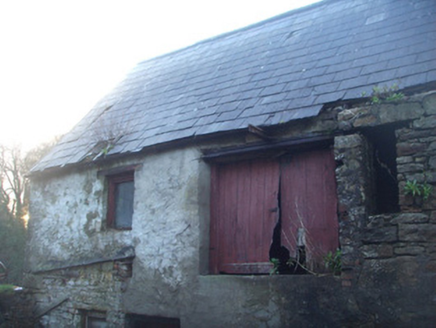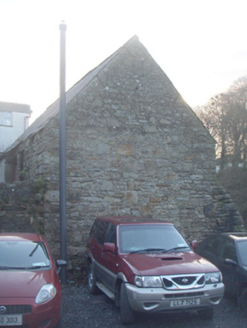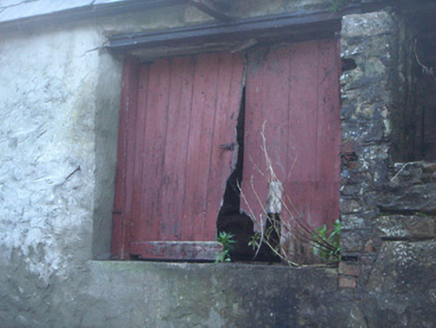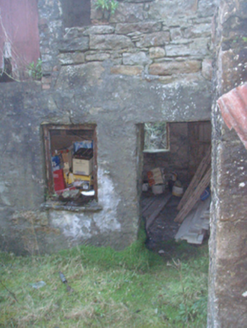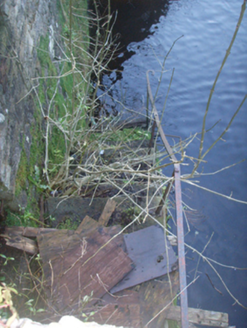Survey Data
Reg No
40843013
Rating
Regional
Categories of Special Interest
Architectural
Original Use
Outbuilding
Date
1840 - 1880
Coordinates
192845, 378472
Date Recorded
21/01/2008
Date Updated
--/--/--
Description
Detached three-bay two-storey outbuilding, built c. 1860. Now out of use. Pitched natural slate roof with grey clayware ridge tiles. Random rubble walling to west elevation (facing river) and south elevation having remains of render over; Roughly squared and coursed masonry to the east elevation with render over. Square-headed openings with stone lintels, and having timber doors and battened timber shutters. Square-headed loading bay to the centre of the east elevation at first floor level having battened timber double doors and remains of metal winch/pulley over. Square-headed doorway to the north end of the west elevation having batten timber door. Rubble stone staircase adjacent to doorway, leading down to River Eske, having cut stone steps and wrought-iron railings. Coursed and rubble stone quay walls to riverfront. Located in back yard of building facing onto The Diamond, Donegal Town, and having west elevation built onto bank of the Eske.
Appraisal
Despite being now out of use, this simple outbuilding survives in relatively good condition and retains its early form and character. It is robustly constructed in local rubble stone and its plain form is indicative of its original utilitarian purposes. Its location adjacent to the River Eske and the steps leading down to the riverfront to the west elevation suggests that this building was originally associated with maritime trade etc. during the second half of the nineteenth, and it represents a rare surviving example of this past industry and economic activity in Donegal Town. Slater’s Directory of 1881 records that boats/ships of three hundred tons could moor at the quay at Donegal Town with iron, timber, coal and groceries the chief imports and the chief exports being eggs, butter and grain. This simple outbuilding/warehouse acts as a subtle historical reminder of this period in Donegal Town’s history, and it represents a modest addition to the built heritage of the town.

